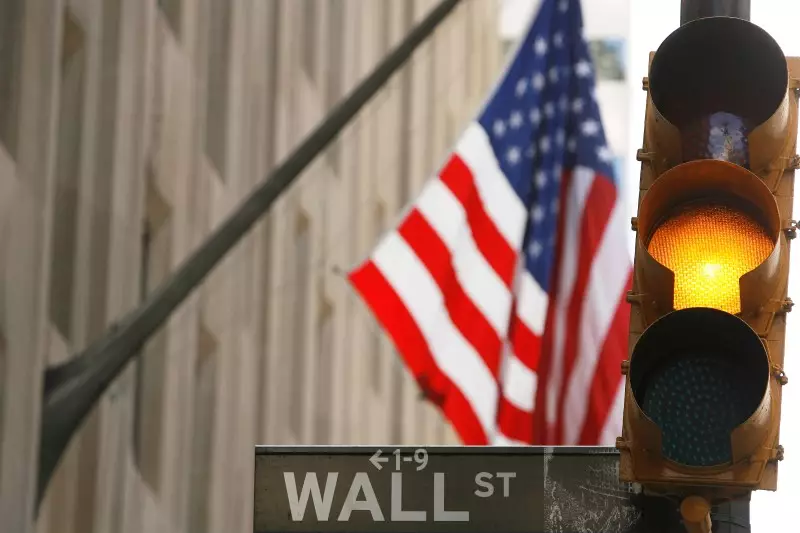As the calendar turns to 2025, Wall Street faces challenges, primarily driven by disappointing performances from major technology firms such as Apple and Tesla. Futures for U.S. stock indices showed signs of stabilization on Thursday evening, following a tumultuous day of trading that indicated a struggle for market confidence. The anticipation of a slower pace for interest rate cuts by the Federal Reserve, in conjunction with prevailing uncertainties surrounding the policies of the new Biden administration, contributed to a cautious atmosphere among investors.
S&P 500 Futures leveled out at 5,917.75 points, while Nasdaq 100 offered a similar steadiness at 21,171.75, although this was set against a backdrop of significant market gains throughout 2024. The Dow Jones Futures barely budged, resting at 42,694 points, indicating a mixed sentiment amongst investors trying to navigate the complexities of both corporate earnings and broader economic dynamics.
The recent decline in Apple’s shares, which fell by 2.6% during the trading session, signals a concerning trend for the tech giant. After the announcement of discounts on flagship devices in China aimed at reviving lagging sales, Apple’s struggles in this critical market came into sharp relief. Analysts from UBS have raised alarms about the company’s potential to miss revenue estimates for the crucial December quarter, as fierce competition from domestic manufacturers like Huawei and Xiaomi grows increasingly intense.
This situation highlights the broader difficulties faced by companies that once dominated the global market but are now challenged by more agile competitors. For Apple, China is not just an opportunity—it’s also a battlefield where strategic missteps could amplify their vulnerabilities.
Tesla’s Delivery Dilemma
Similarly, Tesla’s report of missing delivery expectations, marked by a 6.1% decline in stock value, illustrates the evolving landscape of the electric vehicle sector. Coupled with disappointing performance in North American and European markets, the company is grappling with its first annual decline in deliveries in over a decade. This raises pressing questions regarding Tesla’s strategy and the necessity for broader diversification, particularly into areas like AI and autonomous driving technologies to alleviate dependency on traditional EV sales.
Tesla is not alone in facing the brunt of increased competition from local and international automotive companies entering the EV space—this reality is reshaping the operational paradigms for established players and new entrants alike.
Wall Street’s tepid start to the new year can also be attributed to altered economic forecasts. The Atlanta Federal Reserve’s recent downward revision of GDP estimates for the fourth quarter hinted at a cooling economy, which typically stirs apprehension in the markets. Conversely, a drop in weekly jobless claims has introduced a conflicting narrative, suggesting resilience in the labor market.
This duality creates a challenging environment for the Federal Reserve, which is now faced with the task of balancing inflation concerns with economic growth. The implication is clear: If employment remains strong, any potential interest rate cuts may take longer than anticipated.
As 2025 begins, Wall Street’s landscape is rife with uncertainty, driven by tech turbulence and mixed economic signals. Investors are left to dissect these trends as they shape their strategies in an ever-evolving market landscape.

